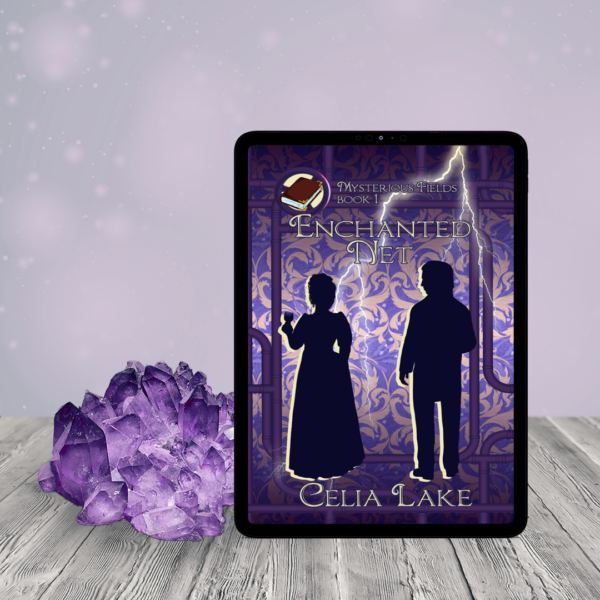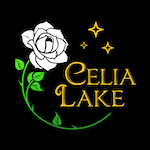I’ve written a few things set in the Victorian era (Forged in Combat takes place mostly in 1882 and Four Walls and a Heart in 1884). But with the Mysterious Fields trilogy, I got to spend quite a lot more time in the period. These three books are set between March of 1889 and June of 1890 (with the last chapter in October of that year).

Of course, Albion raises an interesting question. In an era named for – and so strongly defined in many cultural ways – by a ruling queen, what does it mean for the magical community? The Pact – the act of magic that separated magical Britain from the non-magical in 1484 – also changed the relationship of the magical community to the ruling monarch.
Victorian Albion doesn’t mind having a queen doing the things queens do. But ‘the queen and the land are one’ is no longer magically true the way it was before the Pact. That responsibility and explicit connection has moved from the monarch (and a single point of failure) to the Council and Lords and Ladies of the land.
On the other hand, there’s still plenty of influence from the larger social culture. While Albion has some of its own customs around things like clothing and manners, others have kept in step with Victorian society. Most people in Albion, of course, spend some of their time most days interacting with people outside of Albion and the magical community. (Those who live in purely magical communities like Trellech or Schola island, or on the landed estates are the demographic exceptions.)
More thoughts to come
In future blog posts, I’m looking at exploring a few of the specifics. They include Victorian funeral customs (and the customs of the same period in France, where the Fortiers take a number of their cultural cues). And they definitely include some of the tensions between the professional and upper classes. (You can expect all of those in the trilogy, too…)
Here, though, let’s look at three things I wanted to explore in the trilogy. Some are historically anchored, some are in dialogue with history, and some are just fun.
Roles for women
The role of women in society is deeply class-related in the Victorian period. All those detailed customs for mourning (especially about when and how you could be in the outer world, and what you wore when you were) largely were the realm of Victorian women who did not work. Working class women and those women in or closely associated with professional work (such as helping run a store or business with a husband or other family) certainly mourned their loved ones and would wear mourning. But they also wouldn’t and couldn’t put their lives on hold for six or twelve or thirty-six months in terms of being active in their social worlds. (Formal mourning for the upper classes prescribed various forms of clothing for women, often in very specific detail. But it also limited the places they could be outside the home.)
Did I mention there are six deaths during this trilogy? Our heroine spends about half the trilogy in various degrees of visible mourning?
Gender and Albion
However, Albion has been a fair bit more balanced in terms of gender for quite some time. It depends on the individual and her background, but Albion learned that if you don’t train your magically powerful women, it usually ends up badly. Not only for them, but for other people around them or accidentally nearby. As a result, Albion’s magical schools are gender balanced. And women with stronger or more potent amounts of magic get training, just like their brothers and fathers and husbands.
It also means that while there is a certain amount of ‘it’s a tad unseemly for upper class women to work’, many women do have magical specialities. Sometimes they’re applying those to philanthropic goals, or to particular tasks for their extended families. Sometimes they’re acknowledged experts in a particular area, holding places on Albion’s Council, training others in their skills, or whatever else seems relevant. Albion’s Council at the start of the trilogy has 10 women and 11 men, for example.
(There are some considerations for women who are pregnant or looking to become pregnant. Some kinds of magic are less safe during that period. Similarly, travel through Albion’s magical portals is considered a non-trivial risk. Both of those come up in the trilogy.)
One of the threads in these three books are our heroine, Thessaly, figuring out what her adult life looks like – and what she wants it to look like. At the beginning of the trilogy, she thinks she’s making one set of choices, with some understanding of what that’s going to limit. By the end of the trilogy, she’s made some different choices (but ones she’s much happier with).
Experimentation
One of the things that fascinates me particularly about the later 1800s is the sheer range of experimentation. I dove into nailing down dates for a whole range of scientific experiments as part of this trilogy. (As well as ‘wait, what did we actually know about this bit of geology right now?’). There are still a lot of things we don’t actually understand all that well about electricity. The 1880s and 1890s were a period of trying a huge range of ideas. Not all of them were good ones.
And later in the 1890s, we have the isolation of phosphorus, the discovery of radium, and more. (I, alas, could not do a plot-related thing with the trick in “The Hound of the Baskervilles”. I’m writing a few years too early for it, here.) And there were all sorts of quack cures, decidedly questionable choices, and people doing dangerous things in the pursuit of knowledge. Some of these worked out much better than others.
People being people
One of the things that always fascinates me about history is the continuing ways that people are people. Wherever you look in history, there are so many human tendencies that come through again and again. Some people are curious, some people just want to get on with what they know. Some reach for power and status, not caring who they hurt on the way. Others take a look around to see how they can help. Some get caught up in their own hubris or pain or fear, and make terrible choices.
The same is true in the Victorian period. Some people are more progressive. Others are looking to make use of whatever technology whatever way they can to get ahead. Some work within the constraints of the society around them, and some look for other options.
Coming in due course
As to more Victoriana… I’m planning on a duology involving Hereswith Rowan, who appears as a secondary character in the trilogy. The first one will take place around the time of her Council Challenge, sometime during the Crimean War. The second is a few years later, once she’s established on the Council. That’s an entirely different set of clothing delights to have fun with!
